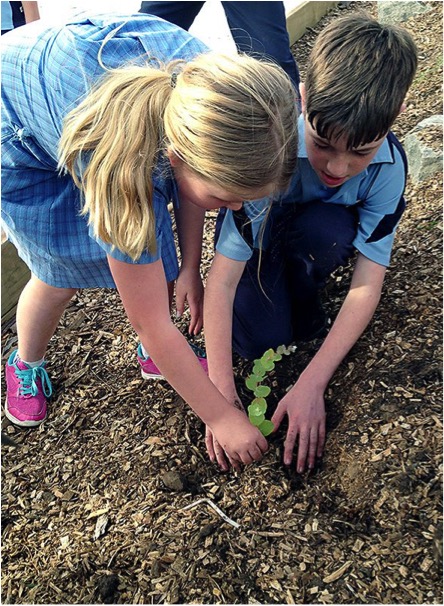
Students from Lindisfarne North Primary were just two of many across Tasmania who participated in National Tree Day.
That is the vexed question that increasingly has farmers — and even many Melbourne residents — scratching their heads. Source: The Weekly Times
Last week The Weekly Times revealed a gold miner had been told he would have to pay $1.25 million in compensation to the government to remove 60 trees from his bush block in central Victoria because of the potential impact on vegetation diversity.
Even his offer to plant new trees to offset those he wanted to clear was rebuffed by the State Government.
The only alternative to paying the $1.25 million was to somehow miraculously make 60 full-grown trees of the same shape and dimensions as those he wanted to chop appear somewhere else. This is clearly impossible — and ridiculous.
So the miner chucked in the towel, and won’t be mining the block.
At $20,833 a tree, you can see why. But the question now is: How do you value a tree?
Well, if you can stick with me, according to the Native Vegetation Scoring Manual from the Environment Department, it depends on if the tree: is on Crown or private land; is native or not; its diameter at breast height; size of canopy; condition; how much more it could grow; its type — spindly or bushy; how much stuff it drops to the ground; and what its loss would mean to Victoria’s biodiversity.
That last one, the loss to biodiversity, and another condition of whether there are other trees that could offset its loss, is where the equation becomes far too tricky and open to interpretation.
For those who want to clear a tree for a development or cropping, the value of any tree is quite clear. If the tree is not removed they won’t be able to harvest X amount of crop, or they won’t be able to build the five townhouses on the block.
Conversely, a development without established trees is not an attractive place to buy.
Yet, consider the possibility of losing 900 trees to the Melbourne Metro Rail project. Most of those trees are at iconic sites such as Royal Parade in Parkville and Fawkner Park in South Yarra.
What is the value of those trees to the regular passer-by, the park user, those who own homes nearby, to the community as a whole?
Clearly, the government will argue the cost of keeping those trees is failure to build the underground rail system, leading to further traffic gridlock.
Clearly, not all trees are of equal value. Some, such as willows, can be a nuisance, clogging waterways and causing environmental mayhem.
And what of those that pose a risk to life, such as huge gums in backyards (such as the one a few doors from my place) that will surely fall on a house one day.
A farm worker in northeast Victoria has been told to pay $115,000 for seven trees he removed on a roadside fence line. But he remains adamant he did the right thing.
“If a tree falls across a fence and a cow gets out, and a car hits that cow and someone dies, I reckon I’d be in more trouble,” he told The Weekly Times.
The great thing about trees is that they can grow from nothing into towering giants.
Where there is space — such as a farm — it is possible to plant new trees to offset the loss of an older tree.
On Royal Parade, that is not so easy. The question of a tree’s worth is one I don’t think anyone can really answer.





